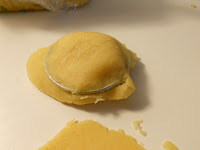More than twenty years
ago, when I was living in Campinas, a city of Sao Paulo state, I used to sing
in a Chorus called COCA - Coral Campinas - with my dear friend Ana Paula Gomes.
It was my preferred activity of the week! One of the songs of our repertoire
was this Baião de ninar, by Gerson:
“Este baião, eu inventei pra ninar
o meu amor num berço feito de raio de luar
baião, oi, de ninar, baião, oi, de ninar”
(Here’s a version by another Brazilian chorus: https://www.youtube.com/watch?v=DiT6mspIX74)
Baião is both the name of a traditional Brazilian dance and the music
that is played to rock the dancing couples, that hold each other very closely
and move to the 2-bars beat all night long.
The name of this dish is an allusion to
this engaging dance, but here, instead of a loving couple, the two
quintessential ingredients of the Brazilian diet - rice and beans, cooked
together and enhanced with a few or several delicious ingredients, such as bacon, cheese, sausage, scrambled
eggs and fresh cilantro (there are many variations throughout Brazil). But beware
- very, very hard to stop eating!
The beans of choice for this recipe are the
black eyed beans / peas. I found them fresh in my local supermarket, but you
can also use canned, or cook your own at home. The difference is that when you
use the beans cooking liquid to prepare the rice, the flavor of the finished
dish is superior (and that gooey thing surrounding canned beans won’t do it. By
the way, rinse them very well before adding to the pan.)
Baião de dois
(Dish of rice and beans cooked together)
Ingredients:
1 lb (500 g) carne de sol /
charque (Brazilian jerked beef)
12 oz (340 g / 2 cups) fresh (quick cooking) black eyed peas
3.5 oz (100 g / 3/4 cup) diced slab bacon
1 Tbsp (3 cloves) garlic, minced
7 oz (200 g / 1 cup) diced onion
2 cups white rice, uncooked
1/2 cup freshly chopped herbs (flat-leaf parsley, cilantro, chives)
1/2 cup diced queijo de coalho (or Finish-style baked cheese)
chili oil, to taste
Method:
1. Rinse the carne seca, cut into 0.5 in. cubes and
soak in cold water for about 4 hours, changing the water every one hour. Cook
in cold water, in a pressure cooker for about 30 minutes, or in a regular pan
until tender (about 2 hours). Remove from the pan, reserving the liquid. Set
aside.
3. Heat a large
saucepan and add the bacon. Cook until golden brown. Remove from the pan with a
slotted spoon, leaving the fat in the pan. Set aside.
4. Saute the
onion in the hot bacon fat until light golden brown. Add the garlic and sauté
until golden brown. Add the cooked carne
seca and the beans to the pan. Stir in the rice and approximately 3 1/2
cups of cooking liquid, starting with the beans liquid and complementing with
the meat liquid. Stir well to combine and bring to a boil. Lower the heat,
partially cover the pan and cook until the rice is al dente, adding more liquid
as needed. Turn off the heat, cover the pan and let rest for at least 5 mintues.
5. Fluff the
rice with a fork, add chili oil to taste and stir in the chopped herbs and the
diced cheese, being careful to not over stir it. Serve with sauteed collard greens, farinha de mandioca torrada (toasted manioc flour) and more hot pepper
on the side.



.jpg)












